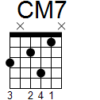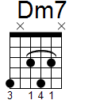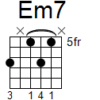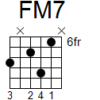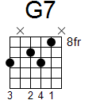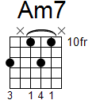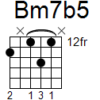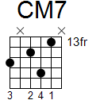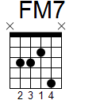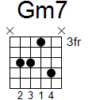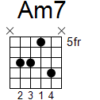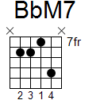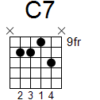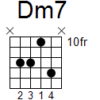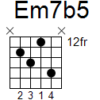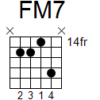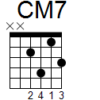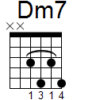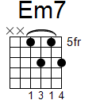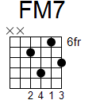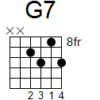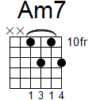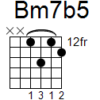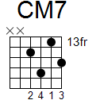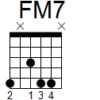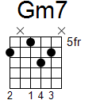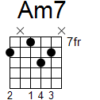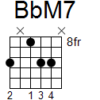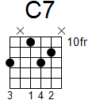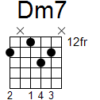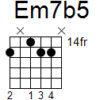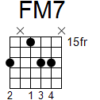In Part 1 we looked at the basic theory behind the harmonized major scale and how to learn four sets of root position chords that will give you over 300 if you include all 12 keys. These chords, and a solid understanding how and why they go together, will give you a firm basis to tackle pretty much any chord progression that’s thrown at you. In Part 2 we’re going to build on these basic chords by learning plenty of inversions that will give you even more options when comping, coming up with parts, or arranging with other instruments.
2nd Inversion Chords
These chords are all second inversion, which means the 5th is the lowest note instead of the root. Learn them systematically as we did in Part 1, paying close attention to making the least amount of movements possible as you switch from chord to chord.
Here’s another set of 2nd inversion chords for the harmonized major scale, this time on the 5-4-3-2 string set. Keep an eye on where the root note is to make finding these chords easier and notice that the fingering is the same for all the chords.
1st Inversion Chords
1st inversion chords feature the 3rd as the lowest note and give you yet more options for comping or coming up with parts.
Here’s another set of 1st inversion chords that fall very nicely under your fingers.
Again, I would practice these chord drills as a warm-up and you’ll soon find they start creeping into your playing, especially when you go to analyze chord progressions.

